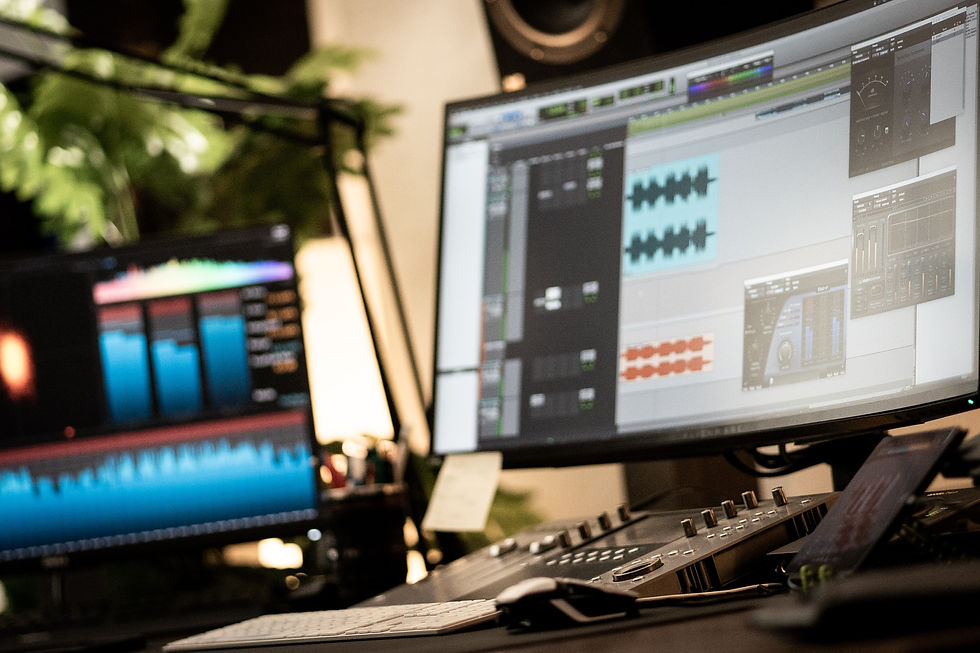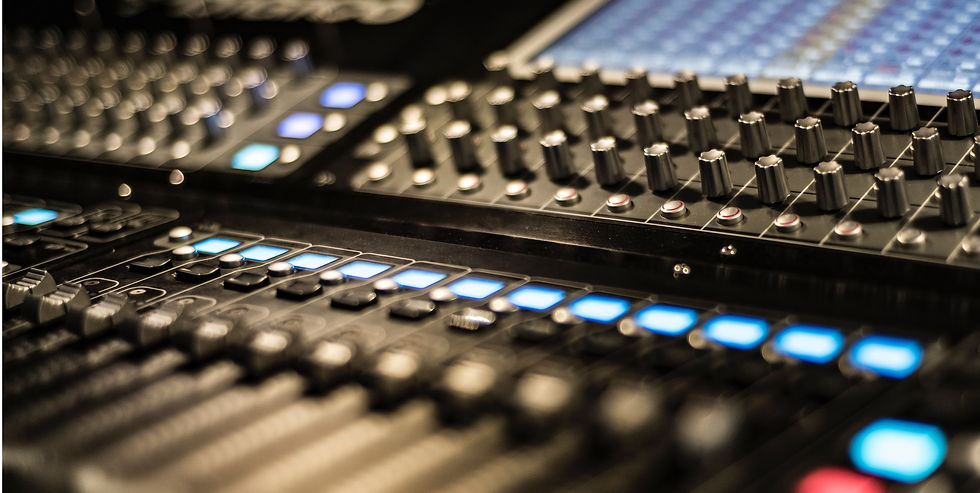Making A Cross-Faded Concept Album In The Digital Age
- Scott Hull

- Feb 22, 2023
- 4 min read
Updated: Mar 23, 2023

Question:
I have two tracks on the album that I'd like to have flow right into one another but still be separate tracks. I think I will be mixing them together as if they are one track, so effects and EQ will match. When it comes time to send them in for mastering, would it be best to send them both to you as one WAV file and let you know where to separate them, or is this the wrong approach to begin with?
Scott’s answer:
There are three questions here inside this one question:
How should I send in my mixes for mastering when they are intended to be crossfaded?
How do we ensure clean playback when users select only one track to play?
Can we really have crossfades in the current world of streaming digital audio?
Ever since digital delivery (like iTunes) and streaming services (like Spotify), the album flow concept has been getting watered down in favor of selling singles. What I’ve found is most artists want to make sure that the beginning and the end of each song play cleanly without any hangover or glitches. So the concept album is finding it hard to coexist with the digital delivery world.
So what to do in this digital age of music? I complained to Apple.
A few years ago, "Mastered for iTunes" was getting a lot of press, and Masterdisk was right on the front lines figuring out how to make it work. So I took the opportunity to explain to Apple what I thought the problem was and how I thought they could fix it. Fortunately, my Apple contact person has been a professional recording musician of note, and he knew exactly what I was describing. But, alas, the Apple is bigger than the mountain and can’t be moved by mere mortals.
My question was, why couldn’t there be two different delivery masters? One in album format would be for the consumer who buys the entire album. This grouping of songs would have all of the creative cross-fades and would be formatted just like a CD. The other delivery master could be a collection of WAV files, each with its clean start and clean end. This would be useful when a customer purchased only one track or a non-contiguous block. Seems like a simple solution. The artist/producer gets the flow they want and the singles sales and marketing that they need.
The problem for Apple is that they have a corporate edict (I'm paraphrasing here): There will be only one version of each song available at the iTunes store. Never two, not five, nor twelve. They don’t want to confuse anyone. That’s at the center of their ethos. So for that reason, no soup for you!
This isn’t really new. Concept rock albums have been made through the years, where one song naturally segues from one to the next. I was reminded of this just the other day while doing my laundry. I had a hankering for Jackson Browne, and Spotify thought I should hear The Load Out.
Great live recording. The song starts with solo piano and voice. Make sure you got it all set to go / Before you come for my piano. But then I almost dropped my shorts when after the solos and such, Spotify jumped to, I don’t even know what—some other song—and my brain lost it. That song is supposed to transition directly into Stay. Stay / Just a little bit longer.
I have always heard those two songs together. And the meaning and intensity, and completeness of the song were destroyed, in my opinion, because it was brutally interrupted. This is just one in a long list of issues I have with streaming cross-faded records. Radio station DJs have understood this and often let those transitions happen live. Most people want to hear the song through to completion. It’s really a shame that, for many, the concept album format is becoming a lost art.
Imagine reading a book, and you are about eight pages from the end when you are suddenly placed on chapter 3 of some other book. It’s for this reason, whenever possible when I'm casually listening to music, that I search out the album in its complete form. That is what the artist and producer meant, and that was how it was supposed to be delivered.
When I’m mastering music at Masterdisk, I work with my clients to carefully adjust the fades and spacings between the songs. This is really important, even if your project is mostly singles. You should note whether your song starts cleanly or if the first bit of audio is clipped off and the end fade sounds ok after mastering.
Sometimes bringing the level up for mastering means that the fade needs to be re-contoured. Often we have to adjust the fades so that the next song starts with a clean beginning. Starting each song from silence is the only way to prevent glitchy song starts and endings.
It’s good to note that room tone cross-fades are almost always fine. The only exception is if there is DC in the recording or if the hum level changes quickly. In that case, you may get a pop at the stop and/or end of the track. I check every one of these play and stop positions to make certain they are clean.
It’s a shame that the sequenced concept album is dying, mostly because we don’t like what the individual play sounds like. On the flip side, vinyl sales are way up, and most listeners appreciate the story-telling concept of putting together a creative record side. Personally, I think we are collectively getting too hung up on the singes. People will buy the single, and if it sounds like they are missing something because the next track cross-fade started, then maybe that means some will buy the next track too.
The good news, if there is any here, is that a vinyl record release does not have to be concerned about single-song playback. It’s rather hard to start a song at the very top anyway, and most people playing records want to hear the entire side uninterrupted. And if you are a musician who really likes the continuous format with segues and transitions, you can supply your own version of the record on Soundcloud or Bandcamp and offer that as your own concept.




Comments